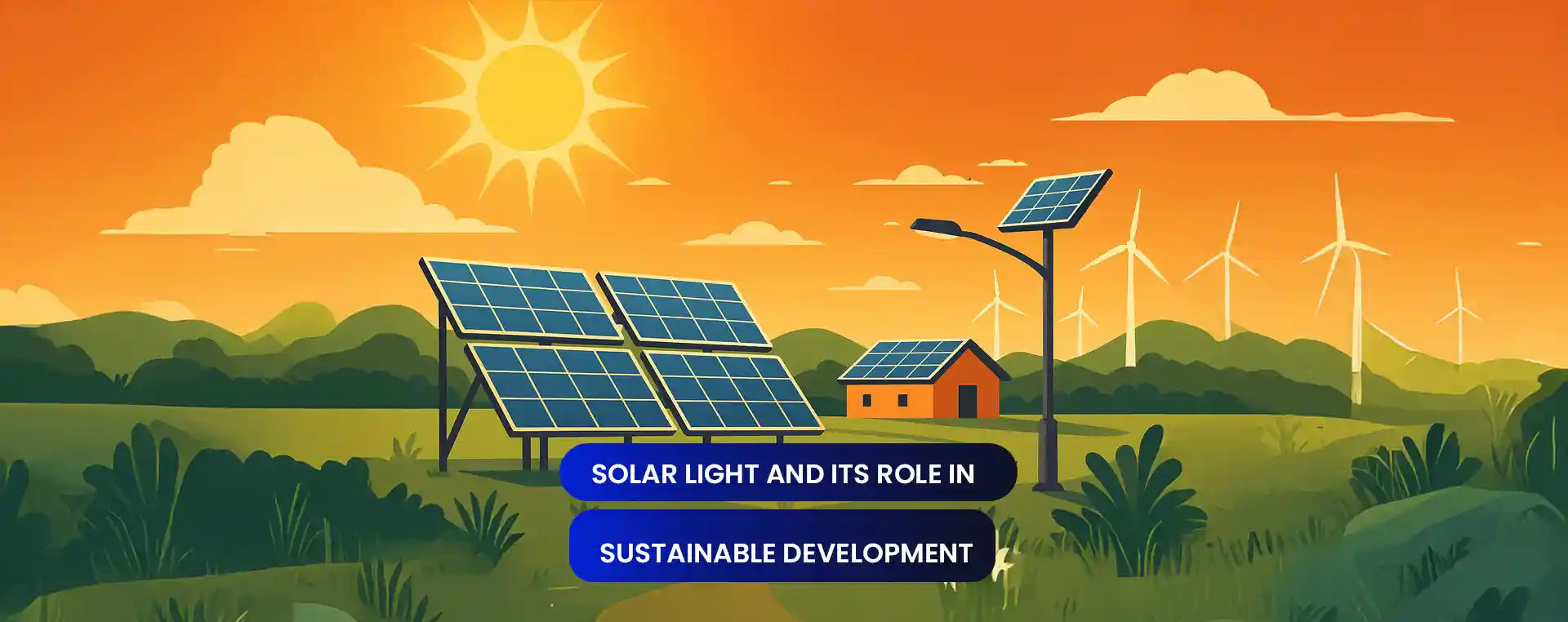With climate change and energy shortages being among the topmost concerns in today's world, the quest for renewable energy has never been more crucial. Amongst the numerous options for renewable energy, solar light is one of the most feasible, accessible, and powerful technologies. Solar lighting extends from gardens and homes to villages and communities, and it has a significant impact on paving the way towards a cleaner and greener tomorrow.
Understanding Solar Light
Lamp solar lightfsio utilizes photovoltaic panels that absorb sunlight and transform it into electricity. This is stored in rechargeable batteries and used to illuminate LEDs or other forms of light at night. Solar lighting is a self-sustaining, renewable system compared to conventional electricity, which tends to use fossil fuels. It can be used without being connected to the grid.
Solar Light and Sustainable Development Goals (SDGs)
Solar lighting contributes directly to a number of the United Nations Sustainable Development Goals (SDGs):
Affordable and Clean Energy (SDG 7): Solar lights bring clean, renewable energy to households, particularly in off-grid areas.
Sustainable Cities and Communities (SDG 11): Solar street lighting, garden lighting, and pathway lighting make cities safer and more beautiful without adding to carbon emissions.
Climate Action (SDG 13): By lowering fossil fuel reliance, solar lighting reduces greenhouse gas emissions.
No Poverty & Quality Education (SDG 1 & 4): In the developing world, solar lamps enable children to learn at night and enable small enterprises, enhancing livelihoods and prospects.
Environmental Benefits of Solar Lights
Lowered Carbon Footprint: Solar lights emit zero emissions while operating.
Increased Energy Efficiency: They use free, renewable sun energy rather than grid electricity.
Waste Reduction: Solar for lights reduce replacement requirements with long-term LEDs and rechargeable batteries.
Sustainable Materials: Recyclable materials are used in many solar lighting installations, further decreasing the environmental footprint.
Economic and Social Impact
In addition to environmental gains, solar lighting contributes to economic development and social equality.
Solar lights extend working hours past sunset in rural communities, facilitating small-scale commerce and evening studies.
They also save households because families no longer require kerosene lamps or grid electricity for illumination.
Cities that implement solar street lights save on power bills and maintenance expenses.
Uses in Everyday Life
Solar Garden Lights: Add beauty to the outdoors while being environmentally friendly.
Solar Street Lights: Enhance safety in urban and rural spaces with no ongoing electricity bills.
Solar Pathway & Driveway Lights: Light the path for pedestrians and cars at night safely.
Solar Security Lights: Provide motion-sensor security without the need for wiring or electricity expense.
The Future of Solar Lighting
With continuously improving technology, solar lights are becoming more efficient, long-lasting, and cost-effective. Intelligent solar systems with remote monitoring, automatic dimming, and hybrid energy storage are already on the horizon. As international energy policies increasingly turn toward renewables, solar lighting will continue to be the pillar of sustainable development.
Conclusion
Solar light is not just a lighting source; it's an emblem of advancement toward a world that is more sustainable. By cutting carbon, facilitating social progress, and providing affordable energy alternatives, solar lighting is the key to a brighter future. Whether in residential, business, or community applications, going solar is an easy yet impactful move toward attaining global sustainability targets.


